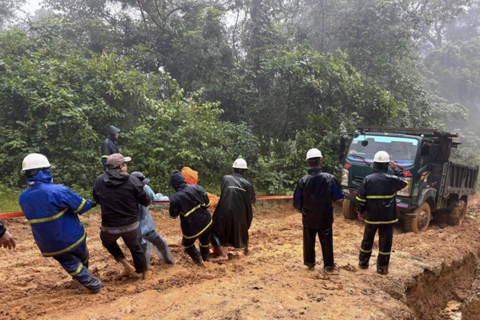Social Affairs
Vietnam's population hits over 90.4 million
Dec 18, 2014 / 04:44 PM
Vietnam`s population reached 90,493,352 people, including 44,618,668 males (49.3%) and 45,874,684 females (50.7%).
With this population size, Vietnam continues to rank 13th in the most populous country in the world and ranks the third in Southeast Asia.

The new numbers came from the 2014 Inter-Censal Population and Housing Survey (IPS), presented on December 17 at the Dissemination Conference organised by the General Statistics Office (GSO).
Reaching more than 90.4 million people, Vietnam's population has increased by 4.6 million compared to 2009.
This figure shows that it is the lowest rate of population growth for the last 35 years.
On average, Vietnam’s population increased by 929 thousand people per year.
The ratio of the average population growth in the period of 2009-2014 reached 1.06% per year, which is lower than those in the period of 1999-2009 (1.2% / year).
However, the inter-censal survey also confirmed that the average fertility rate for women is 2.09 children.
GSO also announced specific population of three largest provinces and cities in the country.
Accordingly, HCM City is the most populous cities of the naiton, reaching 7.955 million.
Hanoi ranks the second with 7.067 million, and Thanh Hoa central provines ranks the third with 3.491 million.
More than 30 per cent of Viet Nam's population lives in urban areas.
The 2014 IPS data reveals that the total dependency ratio is 44 per cent. The number of people aged 65 and older is 7.1 per cent. With an increasing aging index, now at 44.6 per cent, Viet Nam's population is aging on a curve.
In particular, the imbalance between men and women in Vietnam has increased rapidly.
The findings of the IPS also indicates that the sex ratio is 112.2 males per 100 females to date, a slight increase since the 2009 census' findings of 110.5 male births per 100 female births.
The 2014 findings also showes that migration trend for the last 5 years have changed in comparison with the results of the census in 2009.
The economic development of the region reverse the migration. Destinations of migrants are always neighboring areas which have economic development.
For example, the Red River Delta region from an area of emigration in 2009 now become an area of immigrant which has attracted a large number of migrants.
The rate of migration (immigration / emigration) of urban areas is 27.7%, meanwhile in the rural areas the rate is -13.3%.
This suggests that the main migration trend is urban areas.
Improvements in living conditions were also noted. Only 46.6 per cent of households live in houses with good conditions. While only 33 per cent of households live in a house with bad condition. The area per capita in the country is 20,6m2.
The survey data came from questionnaires collected from five per cent of the country's households. Statistics offices, from district to the central level, contributed to number collecting and crunching efforts.
Reaching more than 90.4 million people, Vietnam's population has increased by 4.6 million compared to 2009.
This figure shows that it is the lowest rate of population growth for the last 35 years.
On average, Vietnam’s population increased by 929 thousand people per year.
The ratio of the average population growth in the period of 2009-2014 reached 1.06% per year, which is lower than those in the period of 1999-2009 (1.2% / year).
However, the inter-censal survey also confirmed that the average fertility rate for women is 2.09 children.
GSO also announced specific population of three largest provinces and cities in the country.
Accordingly, HCM City is the most populous cities of the naiton, reaching 7.955 million.
Hanoi ranks the second with 7.067 million, and Thanh Hoa central provines ranks the third with 3.491 million.
More than 30 per cent of Viet Nam's population lives in urban areas.
The 2014 IPS data reveals that the total dependency ratio is 44 per cent. The number of people aged 65 and older is 7.1 per cent. With an increasing aging index, now at 44.6 per cent, Viet Nam's population is aging on a curve.
In particular, the imbalance between men and women in Vietnam has increased rapidly.
The findings of the IPS also indicates that the sex ratio is 112.2 males per 100 females to date, a slight increase since the 2009 census' findings of 110.5 male births per 100 female births.
The 2014 findings also showes that migration trend for the last 5 years have changed in comparison with the results of the census in 2009.
The economic development of the region reverse the migration. Destinations of migrants are always neighboring areas which have economic development.
For example, the Red River Delta region from an area of emigration in 2009 now become an area of immigrant which has attracted a large number of migrants.
The rate of migration (immigration / emigration) of urban areas is 27.7%, meanwhile in the rural areas the rate is -13.3%.
This suggests that the main migration trend is urban areas.
Improvements in living conditions were also noted. Only 46.6 per cent of households live in houses with good conditions. While only 33 per cent of households live in a house with bad condition. The area per capita in the country is 20,6m2.
The survey data came from questionnaires collected from five per cent of the country's households. Statistics offices, from district to the central level, contributed to number collecting and crunching efforts.








